#Opernball
Explore tagged Tumblr posts
Text
besoffen ein opernballinterview zu geben gehört für österreichische politker* ja irgendwo dazu (s. gernot blümel) aber der atomwaffen mozart sager vom schallenberg hat mich trotzdem fast aus den patschen gehaut
*mit voller absicht nicht gegendert, niemand ist mitgemeint
6 notes
·
View notes
Text
It’s Opernball night and I’ve been thinking about if Roderich would attend or not but truth is he’s probably been there every year from the start be it alone or in his current partners company but in a universe where the nations are like celebrities he’s at least once been Richard Lugner’s special guest
#hetalia#Opernball#aph austria#hws austria#if you don’t know Richard Lugner I recommend changing that#he’s a fucking legend I love him he’s so funny#living his life#Riva.txt
5 notes
·
View notes
Text



Flowers at Staatsoper Vienna, provided by "Dollsblumen" for Opernball 2025.
These photos are off their instagram, and there's also more on the website.
#opernball#ja ich find ihn auch massiv kritisch aber hear me out#die Blümchen sind halt so schee#wiener staatsoper
0 notes
Text
tomorrow is Opernball in Vienna and the left wing party Links Wien opens a punch stand under the motto "punch the rich" right opposite from the opera house. and I just heard it's pokemon day too tomorrow so in every way except physically tomorrow I'm hanging out at the Linke Wien punch stand playing pokemon go.
#i dont have time to go to the city tomorrow night unfortunately#but mentally im there#opernball#i am from austria#my stuff#pokemon day#opera ball
1 note
·
View note
Text
Franz Grabmayr für den 67. Wiener Opernball. Charity-Kunstauktion zugunsten "Österreich hilft Österreich" - KUNSTINVESTOR
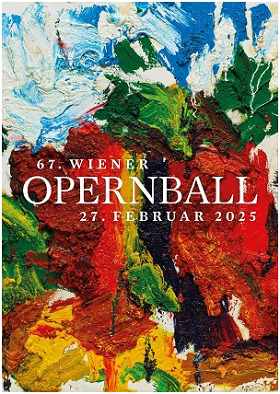
0 notes
Text

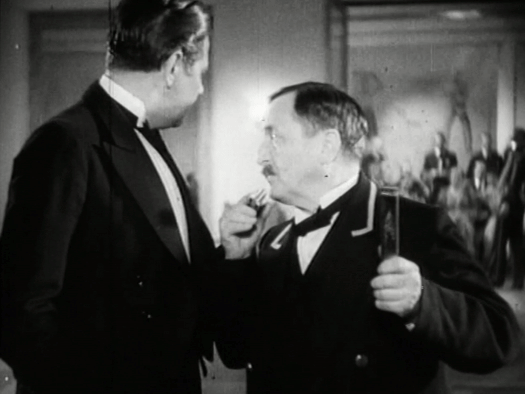
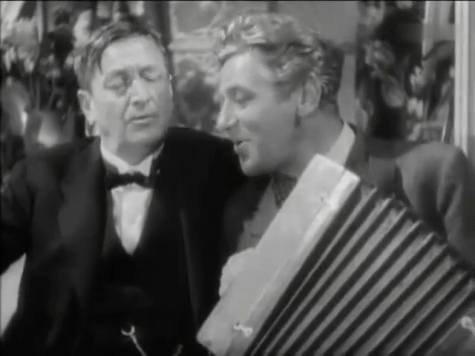
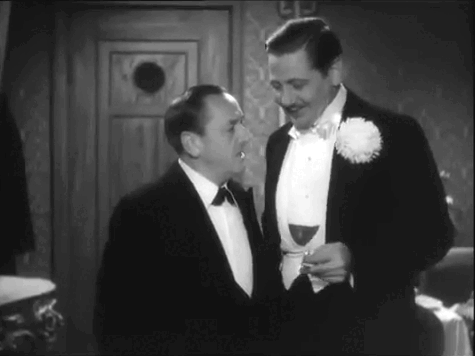

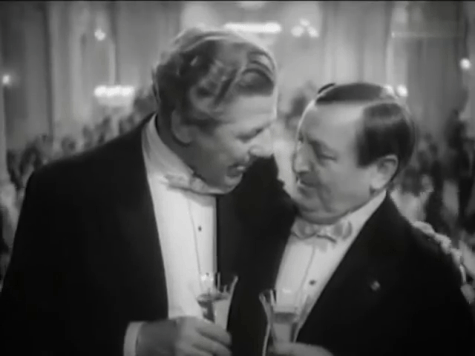


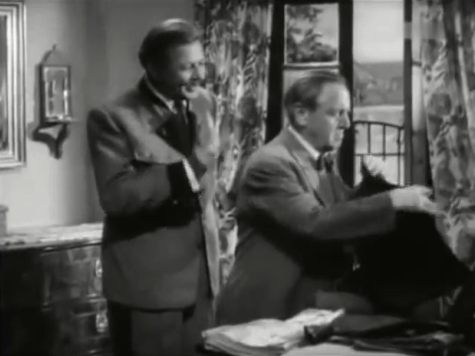
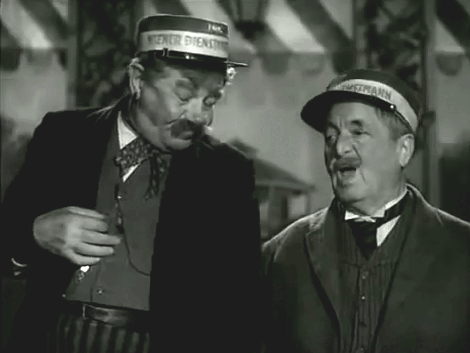
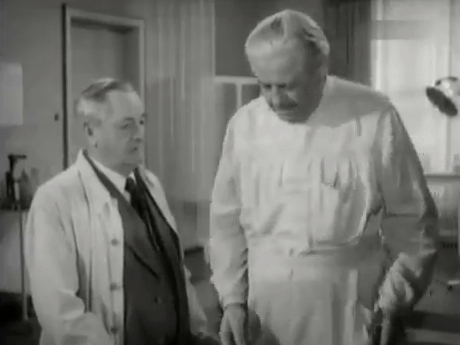
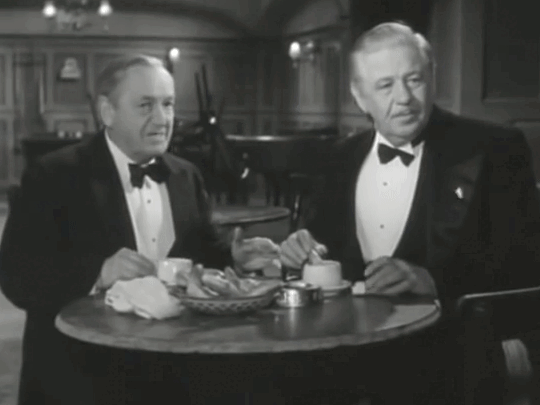


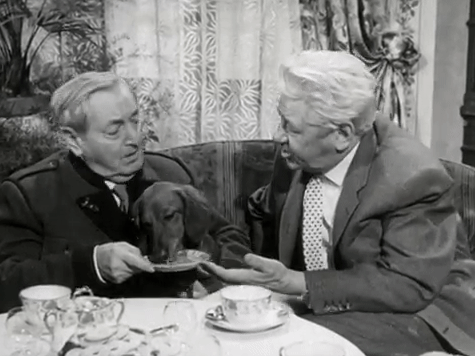
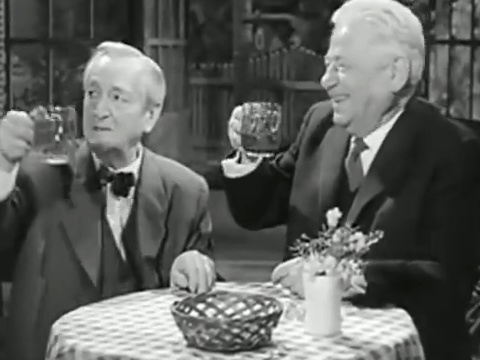
Hans Moser & Paul Hörbiger
#hans moser#paul hörbiger#MoHö#original odo edit#ollie's oldies#ollie's austrians#endstation#endstation 1935#schabernack#schabernack 1936#immer wenn ich glücklich bin#der opernball#der opernball 1939#wiener g'schichten#wir bitten zum tanz#schwarz auf weiß#schrammeln#schrammeln 1944#der hofrat geiger#hallo dienstmann#ja so ist das mit der liebe#ober zahlen#hallo taxi#und du mein schatz bleibst hier#freunde für's leben#drei liebesbriefe aus tirol#die bessren älteren herrn#only ones potentially missing because I couldn't find them: der verjüngte adolar (1935) and ... und wer küsst mich? (1956)#then there are seven more in which they are both credited but for a variety of reasons don't share the screen
1 note
·
View note
Text
got so radicalised by 25% of my "opera tour" just being us being herded like cattle to go watch a propaganda promo video of their 'exclusive' yearly opernball experience (tm) that i changed my afternoon plans and went to lucheni's grave SKGLDLFÖWL



#luigi lucheni you will always be famous#dkkdkdkdks#his head is buried at the anatomische gedenkstätte at zentralfriedhof x) no plaque or anything but its known
10 notes
·
View notes
Text
Like many non-Austrians, I first discovered Vienna’s winter ball season through German-language tabloids. The celebrity-studded Opernball (Opera Ball), the season highlight, is widely covered in the German-speaking world, where it is streamed live on TV and culled for clickbait online. Glittering details are consumed with a mix of aspiration and resentment: debutantes, tiaras, and pricey opera boxes (starting cost: $14,000)! The only sign of the 21st century is a name-drop such as Kim Kardashian, who attended in 2014.
The Opera Ball, I have since learned, is only the tip of the iceberg.
More than 400 formal balls are held in Vienna each winter carnival season. This February, I visited three. The tradition combines the public festivities of the medieval carnival with the legacy of the “Waltzing Congress” of 1814, better known as the Congress of Vienna. Held just a year before Napoleon’s final defeat at the Battle of Waterloo, the Congress—a series of diplomatic meetings between leaders of various powers opposing France—aimed to reinstate Europe’s monarchies and hash out the continent’s post-Napoleonic order.
Its more immediate effect, however, was to transform Vienna into a giant ballroom.
With representatives from Prussia, Austria, Great Britain, Russia, and France, as well as assorted royalty and nobility from across Europe gathered at the imperial Hofburg Palace, the prevailing atmosphere was that of a permanent “house party,” observed historian Dorothy McGuigan in her book The Habsburgs. The dance halls were packed, and the streets were filled with music and fireworks; to lubricate negotiations, Emperor Francis hosted evening balls and musical entertainment, including a concert featuring 100 pianos. The enduring epithet of the so-called Waltzing Congress stems from a quip by the rakish Prince Charles-Joseph de Ligne of Belgium, who proclaimed that “[t]he Congress doesn’t work; it dances.”
The Viennese ball season has been celebrated almost continually since 1814, breaking only for the two world wars and recent pandemic. In a country of only 9 million people, it draws more than 500,000 ordinary people out to waltz. Nearly every profession in Austria hosts its own celebration: A nonexhaustive season program includes the Police Ball, the Firefighters’ Ball, the Engineers’ Ball, the Doctors’ Ball, multiple farmers’ union balls, and the Lawyers’ Ball. Some of these dances, such as the Coffee Brewers’ Ball or the Hunters’ Ball, have outlived the imperial-era professions that they were created to celebrate. Others, such as the Ball of the International Atomic Energy Agency or the recently retired Life Ball—founded to raise awareness during the height of the AIDS crisis—are decidedly contemporary.
It was the improbable continuity of 19th-century traditions, however, that drew my attention. The frenzy of the waltz—still performed in the same ballrooms as in the imperial era—echoes a persistent anxiety for Europe’s over-touristed, economically uneasy, and politically pessimistic capitals: On a continent that relishes golden-era traditions yet finds itself slipping in the geopolitical world order, how do you face the future without romanticizing the past?
Viewed through this lens, the ball season refracts the flamboyant anachronisms of a region in transition. Dozens of guests and former debutantes—most balls include a debutante ceremony—described the events to me in terms of glorious contradiction. The balls, I was told, are elegant, tacky, rarified, intimidating, democratic, elite, ironic, gorgeous, decadent, tiresome, astonishing; they are both political and apolitical, accessible and inaccessible, international and decidedly Viennese.
This cacophony carried over to my own impressions. I saw tiaras and hoop skirts and a tattoo of the Sistine Chapel fresco framed in the V-line of a backless ballgown. Orphaned evening gloves and ostrich feathers drifted across the parquet floors of the Hofburg Palace; hair fixtures nested in updos like Fabergé eggs. I witnessed government ministers dance the disco and saw at least six debutantes faint.
I was told by veteran ball journalists that the publications I write for sound “serious and political,” and that a Viennese ball is neither a serious nor political event. A ball is frivolous, they said; a ball is for fun. I don’t disagree. But I also believe that a society’s attitude toward tradition shapes its expectations for the future—and how much that future should resemble the past.
Maryam Yeganehfar, the creative director of the Opera Ball, emphasized the balls’ capacity for rejuvenation and even escape. The carnival festivities were originally founded, she said, to give people “hope, life, enjoyment” in the weeks leading up to Lent, the 40-day period before the Christian celebration of Easter.
“[W]hy is enjoyment always framed as decadence?” Yeganehfar asked.
At a time when Europe’s post-COVID-19 pandemic headlines—on immigration, war, inflation, right-wing extremism, climate change, energy crises, and strained trans-Atlantic relations—often give reason for pessimism, the balls are a testament both to the temptations of nostalgia and to the resilience to party on.
The Science Ball
The first ball I attended was the Ball der Wissenschaften (Science Ball). Oliver Lehmann, who has served as the event’s director since 2014, is aware of the season’s appeal for foreigners: “For a lot of our friends and guests from the U.K. and the U.S., but also from Switzerland and Germany,” he said over a Zoom call before I arrived, “a ball sounds like a sugar fairy tale from a Walt Disney movie.”
Lehmann admitted that there is some truth to that image. But the balls might be better understood as the “Austrian version of a huge networking event,” he said. Even socialists once held balls; in the 1860s, party members at the Workers’ Ball waltzed wearing bright red ties, attracting attention from political censors.
The Science Ball, for its part, brings together representatives from Vienna’s nine public universities, its expansive network of private and vocational colleges, and numerous research institutions to celebrate—and boost—the city’s reputation as a center of innovation.
The Science Ball also has a unique, quasi-political agenda. It was first held in 2015 in part to undercut the claim of the far-right Akademikerball, or Scholars’ Ball, to “scholarship,” Lehmann said. The gathering of right-wing fraternities is organized by the nativist Freedom Party of Austria (FPÖ). In 2014, the annual protest against the Scholars’ Ball turned violent, resulting in injuries and damaged property.
Today, the Vienna government offers the Science Ball its palatial city hall free of charge, signaling its continued support for the ball’s mission and helping to lower ticket prices for attendees. Regular entry is 100 euros, or $107, while students can attend for $43. It’s a win-win arrangement: Scientists celebrate field achievements; students attend on the cheap; local government discredits nativist misinformation; and a city whose reputation for innovation is often overshadowed by its cultural-historical attractions gets to advertise its technical heft.
To Lehmann, the Science Ball’s focus on contemporary Vienna is evidence that the balls have “nothing to do with nostalgia.” When I asked if the recent rise of right-wing nativism in Austria (the nativist FPÖ came in first in Austria’s elections for the EU Parliament this month and is currently polling at more than 30 percent ahead of elections this fall) has begun to politicize the balls, he replied, “Only counterintuitively, because we’ve never sold out so fast.”
When I arrived, the Science Ball proved to be many balls in one. The dancing unfolded through a series of rooms across three floors of the city hall, each with its own band and musical style. The main ballroom, lined with chandeliers and debutante couples in tuxedos and white gloves, opened onto a grand stairwell decked out with flowers. Beyond this lay the sultry tango room, followed by a baroque cloister where a cover band played “Que Será, Será,” and a ground-floor disco crowded with younger guests. The latter venue is where I spotted Austria’s federal climate minister briefly boogying to “Stayin’ Alive.”
This year’s ball was dedicated to promoting more effective strategies for communicating the threats posed by climate change. There were leaflets floating around with a carbon-emissions logic puzzle, plus a cryptic exhibit devoted to whales that featured a fog machine. In the flagstone courtyard, an 8-by-8 meter inflated cube (about 25 feet across), reminiscent of a giant bouncy house, offered a visual representation of one metric ton of carbon emissions; the average European Union citizen emits between 7 and 8 metric tons of carbon dioxide each year.
The importance of these issues to the Austrian government’s agenda was underscored by the presence of Vienna Mayor Michael Ludwig and Leonore Gewessler, the federal minister of climate action, environment, energy, mobility, innovation and technology. On the main stairwell, the politicians posed for selfies with students, many of whom expressed interest in climate-related issues. The balls can facilitate this sort of direct constituency engagement. But Gewessler also warned against overstating the events’ political importance: “A lot has changed since the Congress of Vienna,” she said. “As it should in an open democracy.”
She is right: Things have changed. Many young women—including the president of the Vienna student union—took advantage of the gender-neutral dress code, donning smart tuxedos and white ties. The organizers “don’t give a damn” about who wears what, Lehmann said, as long it’s evening attire. A couple of biologists I spoke to with roots in India, who now work at a Viennese research outlet, appeared in a tux and emerald sari repurposed from Mumbai’s wedding season. (The fact that I, too, had worn my wedding dress became a bonding moment.)
A group of American exchange students from St. Olaf College in Minnesota had bought their outfits at a budget shop in nearby Bratislava, Slovakia, about an hour away by train. They were starstruck. “It’s amazing,” one said. Another chimed in: “But the drinks are really expensive.”
The balls’ class dynamics are the subject of much local scrutiny. Open any Austrian newspaper in January and you will find an announcement about the average cost that each guest spends per visit: $371. About a third of that is paid for entry, and the rest on attire, taxis, styling, and infamously exorbitant concessions. Local headlines decry $15.50 pints and $17 Wiener sausages. In 2022, an Austrian state governor went viral for her tone-deaf tip that constituents restrict themselves to owning three—rather than 10—ballgowns.
The considerable spending associated with the balls is also a source of revenue that working-class Viennese—taxi drivers, caterers, dance instructors, and hairdressers—depend on. Norbert Kettner, the CEO of the Vienna Tourism Board, an independently run organization that also receives funds from the city, pointed out that the hundreds of millions of euros that this year’s 540,000 guests spent on the balls filter back into the local economy. At a “styling corner” at the Science Ball, where guests can stop by for touch-ups, one freelance makeup artist estimated that she makes more than half her annual income during the ball season.
Later that evening, my taxi driver explained that he organizes his night shifts around the ball schedule, which he pulled up on his phone; there were five events that night alone. When I asked whether he’d ever attended a ball himself, he laughed: “Just outside!” That is, at the taxi stand.
It’s natural to wonder whether the 19th-century aura does more to promote or impede democratic norms, especially when far-right nostalgia—such as that channeled through the FPÖ-sponsored Scholars’ Ball—is on the rise. The object of that nostalgia is pre-globalization Europe. There is a perception that the continent’s status has declined since then: The eurozone’s respective share of the global GDP, for example, has fallen by more than a third since 1960. On the other hand, Europe remains comparatively wealthy; Austria’s per capita GDP is the 14th-highest in the world, according to International Monetary Fund estimates.
Meanwhile, as war rages on in Ukraine, Sudan, and the Middle East, the EU Agency for Asylum predicts that 2024 could bring the highest number of asylum-seekers to the bloc since 2015, when 1.3 million refugees arrived in Europe, about half of them from Syria, Afghanistan, and Iraq. Just before this year’s carnival season, the 35-year old Austrian right-wing extremist Martin Sellner presented a bone-chilling “remigration” plan for migrants, asylum-seekers, and “unassimilated citizens” at a November conference of far-right actors near Berlin. He has since been banned from entering Germany.
The balls appear to offer a welcome respite from these thorny challenges—if they don’t feed back into the well of nostalgia from which these troubling political headlines are sourced.
Around midnight at the Science Ball, a psychology master’s student from Bavaria took a break from her heels on the red-carpeted stairs. She told me that this was her second time attending the event; she and a friend visited last year as well to celebrate the conclusion of a dreaded statistics exam.
“We love it,” she said, gesturing at the glittering crowd of young people posing for pictures behind us, “but we also hate it.” In her view, ball culture is elite and exclusive, reserved for the rich—but more so at other events than at this one. All the same, she conceded, “Why not feel super special? For 40 euros, look what you get.”
The Coffee Brewers’ Ball
Hosted by the Club of Viennese Coffeehouse Owners, the Kaffeesiederball, or Coffee Brewers’ Ball, is another of the season’s most-anticipated events. It celebrates and promotes the history of Vienna’s famous coffeehouse culture, which was inducted into the UNESCO list of intangible world heritage practices in 2011. Were there a people’s choice award for balls, the Coffee Brewers’ Ball would likely win; multiple guests, none of them coffee brewers, told me that it’s the most beautiful ball of the season.
The stately Hofburg Palace, where the ball was held, took on the atmosphere of a black-tie nightclub. Attendees—whose ages spanned from 18 to 80—had traveled from Munich to celebrate a 40th birthday; from Dubai, for the glamour; from Austria’s southern Carinthia region to see the scheduled performance by the Vienna State Ballet; and from northern Austria, to see a disco cover band (called the Bad Powells). Most were from Vienna itself. They had come to see the Hofburg, whose status as the former imperial palace lends the events held there a particular lure and elegance.
The guests were there, above all, to dance: the polka, the quadrille, the polonaise, and the tricky Viennese “left waltz,” in which couples follow a double rotation, revolving on their own axes while simultaneously orbiting the room, like planets hurtling around the sun. The dancing spilled from the main ballroom into gold-trimmed apartments leading deeper and deeper into the palace; I finally reached a dead end at the storied Redouten Rooms, which ball-enthusiast Empress Maria Theresa renovated in 1748 to better accommodate waltzes and masquerades. That evening, they had been furnished with neon lights, a gin bar, and a DJ spinning techno.
The balls have long dramatized a broader European tug-of-war between democratization and aristocratic control. From the 16th to 18th centuries, the monarchy strove to regulate, then ban, public masquerades and dances in the weeks leading up to Lent. The prohibitions were issued on the grounds of mischief (murders were known to be committed from behind the anonymity of carnival masks) and the threat of popular uprising.
Meanwhile, the nobility began to host their own masquerades in private ballrooms such as the Redouten Rooms. When Emperor Joseph II opened these rooms to the nontitled public in 1772, the nobility retreated once again to exclusive spaces, where they could better monitor the guest list (and, by extension, the marriage market). The same trend followed the rise of public dance halls at the turn of the century, when every profession began to hold its own celebrations.
Today’s balls are also increasingly international and cross-cultural. “Twenty years ago,” a 40-year-old Viennese guest told me, “you wouldn’t see so many international guests.” This year, he had brought two friends from Paris. As the night wore on, I also met a fashion journalist from Switzerland, a reporter from South Korea, and a correspondent from Munich. In one of the palace’s many golden bars, a local journalist pointed a camera at two models posing in a black tuxedo and a frothy pink gown. When I asked what the photoshoot was intended to advertise, he gave a cheerful answer: “Vienna!” The staged images will run in an international travel magazine.
For European states, the continent’s golden era is readily monetizable through foreign tourism. In cities such as Barcelona and Amsterdam, the annual total of visitors outnumbers locals by more than 10 to 1, prompting some local governments to dissuade further travelers from coming. Today, tourism makes up almost 10 percent of Austria’s economy, the same share as for the eurozone as a whole, which also claims more than 60 percent of the world’s international leisure travel.
There are many reasons to be drawn to the continent; Vienna itself is frequently ranked as the world’s most livable city. Yet among locals, the pandemic, climate change, and geographic proximity to Russia’s war in Ukraine can contribute to a mood of perceived domestic decline.
One former debutante reflected on her experience with a contagious nihilism: “Europe is lost,” she said. There’s “Ukraine,” and “nobody has money. Everything is fucked, basically, so why not party?”
It is not the kind of sentiment that will make the travel magazine spread.
Despite signs of disillusionment, Kettner—the Vienna Tourism Board CEO—said that young people such as the former debutante have “rescued” the balls. The discotheques and increasingly gender-neutral dress codes are part of a concerted effort to appeal to younger generations.
It’s been successful: Debutante classes ahead of the balls, which draw from the under-30 crowd, are full at the city’s top dance schools. Post-pandemic participation across all ages has risen from 520,000 in 2019 to an estimated 540,000 in 2023. The challenge of keeping the ball season relevant is a microcosm for Europe’s overall challenge: How to protect proud cultural traditions while also making sure that they can keep up with the times.
The Opera Ball
This official state ball, the “ball of all balls”—Austria’s most beautiful, decadent, and exclusive event—arrived on the scene in the year 1935. It is a fundraiser, with revenues flowing to the Vienna State Opera, in whose building the dance is also held. In 2019, the event raised the equivalent of more than $1.1 million for the national opera and ballet.
In recent years, the Opera Ball has also developed a side reputation for celebrity antics. This is in large part thanks to Austrian reality TV star and businessman Richard Lugner; the reveal of his date is an annual tabloid event. In 2005, Lugner was accompanied by former Spice Girl Geri Halliwell, who, headlines gleefully reported, refused to dance with him. His other previous companions have included Pamela Anderson, Kim Kardashian, and Grace Jones. This year, he took Priscilla Presley.
A livestream broadcast of the ball is popular with viewers at home. This winter, more than 1.6 million Austrians and 1 million Germans tuned in.
The Opera Ball, with its outsized media footprint, also attracts dissenters. An annual demonstration that has been held on the same day as the ball since the late 1980s has become as much a part of the tradition as the waltz itself. Organized by the Communist Youth of Austria, this year, 400 to 600 people marched to the slogan “Eat the Rich.” More specific demands included a nationalized housing policy, the reinstatement of a national inheritance tax, and wage increases to keep pace with inflation.
The group’s media relations manager, Johannes Lutz, said that the protest stands against the inequity that the Opera Ball “symbolizes” rather than the ball itself. The minimum entry price of about $426 ($38 of which is earmarked for charity) is a point of contention; basic tickets for the season’s other exclusive balls range from $107 to $208.
Yeganehfar, who has served as the creative director of the Opera Ball since 2023 and also runs a successful local event production company, conceded that the ball “has its price.” She compared it to a major sporting event: Some fans will save up to attend, but many more will watch from home. (By comparison, the average ticket price to attend an NFL football game in the United States was $377 in 2023.) It is precisely because ordinary people “save up to be in this room” that Yeganehfar said she aims to make the Opera Ball so memorable.
“This is the most beautiful event in the entire country,” she said. “We should put it on a pedestal.”
The ball unfurled throughout the entire opera house—onstage, in the wings, in the basement, and in the many gilded bars and cafes—lending a night-at-the-museum giddiness to the evening. From a lobby erupting with Pink Floyd roses, arriving parties filtered through linoleum hallways and past dressing rooms usually reserved for singers and ballerinas. The dancing took place on the stage itself, which had been extended over the orchestra pit.
To debut at the Opera Ball, one breathless young debutante told me, is to occupy the same stage where the “the greatest singers in history” have performed.
The idea that the Opera Ball is something “you should see once in your life” is a sentiment that I heard from guests again and again. A couple from Berlin—a retired secretary and the manager of a hydrogen firm—said they were in attendance because Vienna is “the city of music.” Eight middle-aged women from Kyrgyzstan had arrived in matching pastel gowns after discovering the Opera Ball on the internet. Two Austrian students—a couple studying education and social anthropology, whose gelled hair and all-black palette gave the requisite dress code a punk twist—told me that they are usually at the leftist demonstration outside. This year, they’d saved up to attend the ball itself, saying, “[o]nce at the Opera Ball, the rest of the time at the protest!”
Onstage, I was asked to participate in a disastrous waltz. A ball veteran leading me through the polka, a step I do not know, insisted that the point of the Opera Ball is to escape reality. “For one night,” he said, “you don’t think about war or poverty. You just celebrate.”
But we were thinking about these issues—he mentioned them without my prompting. Awareness of the world outside was inscribed in the price of concessions, 10 percent of whose revenues were earmarked for an Austrian charity initiative in addition to the $38 earmarked from the ticket price. I saw three young men pass around a flask of liquor, a common workaround to the exorbitantly priced drinks. Exiting the stage, I dodged waiters rushing into private opera boxes with trays of petits fours and canapés.
This is about “tradition,” guests told me. It’s about prestige. It’s about attending the same ball as celebrities. (Later, I discovered that Italian actor Franco Nero was also in attendance.) It’s about “seeing and being seen.” It is, above all, about the illicit, dreamworld feeling of being where we’re not supposed to be: backstage at the Vienna Opera House and also, possibly, in the 19th century.
In the lobby, VIPs were being interviewed on live television. The sense that I’d fallen through the looking glass became more overwhelming when I stumbled into the basement, which had been transformed into a club. On a velvet sofa adjacent to the writhing dance floor lay a tulle hoopskirt, evidence of someone’s late-night costume change.
Like a hypnotist’s signal, it was my cue to head out and catch my early morning train.
Out in the real world, Yeganehfar’s comment lingered with me the most: “Why is enjoyment always framed as decadence?”
The taxi driver who picked me up outside of the opera house was originally from Poland. Our conversation drifted to the rise of right-wing politics in his native country. “History is turning back on itself,” he concluded, a reference to the ascendence of the far-right Law and Justice party in Poland and the accompanying decline in German-Polish relations. The observation compounded my sense of being drawn through multiple timelines at once.
By the time we arrived at the hostel apartment where I was staying, it was dawn. I exited onto the sidewalk and tipped my driver everything I had. Teetering in the sunrise in a pair of borrowed heels, I wondered if ball critics’ hand-wringing over decadence speaks less to a distrust of pleasure than to a profound sense of dissonance. Europeans still enjoy a quality of life that is the envy of much of the world, yet populists have managed to create—and spread—a narrative of a continent in imminent decline.
“Let us hope the future will be better!” the taxi driver said in parting. I found myself a little too eager to agree.
47 notes
·
View notes
Text
glauben wir ich schaffs in meinem leben mal zum Opernball?
8 notes
·
View notes
Text
heute ist opernball oder wie ich sage: hubsi kramar appreciation day
6 notes
·
View notes
Text

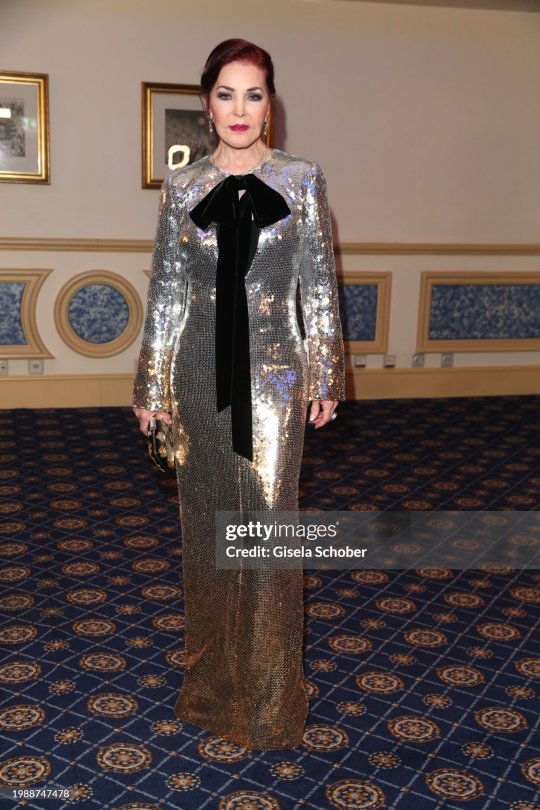
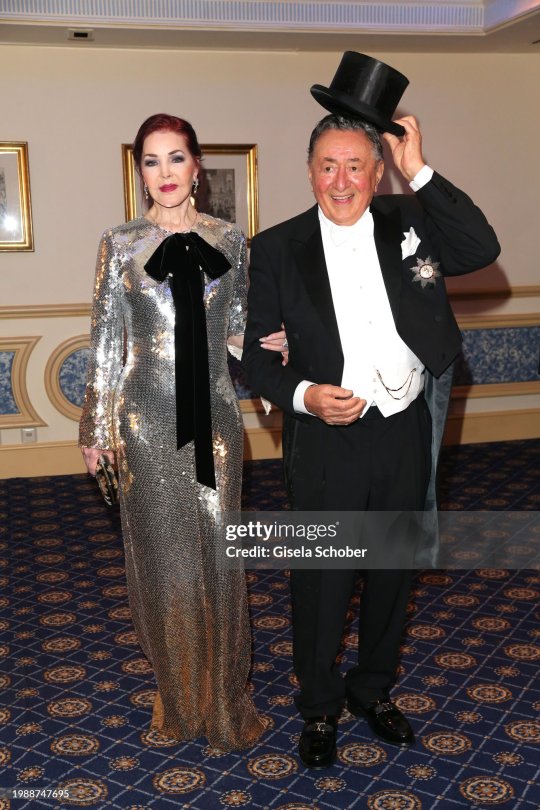
Priscilla Presley, Richard "Mörtel" Lugner during the reception and photocall prior the Vienna Opera Ball (Wiener Opernball) 2024 at Grand Hotel on February 8, 2024 in Vienna, Austria.
📸 by Gisela Schober
4 notes
·
View notes
Text
0 notes
Text
0 notes

